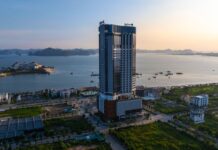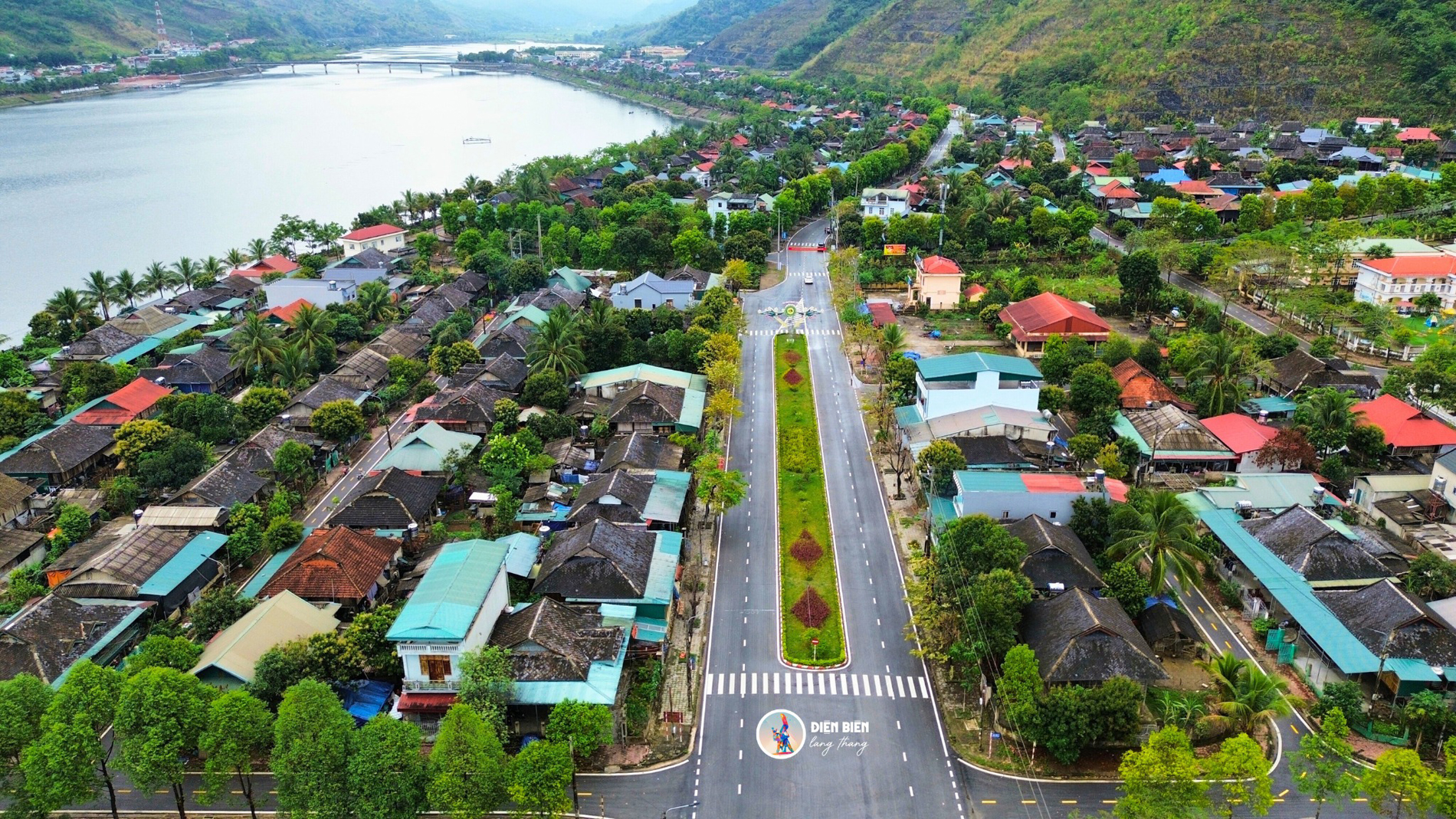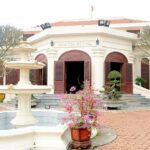The shared footage reveals a breathtaking route with picturesque landscapes. On one side lies a crystal-clear lake, and on the other, a row of scientifically designed stilt houses lines the road.
Along the path, a lush grove of coconut trees provides shade, and in the distance, layers of mountains fade into the horizon.
A “Mini Hoi An” scenic route in Dien Bien. Source: Nguyen Manh Quy
Many netizens compared the scenery to a “Mini Hoi An” in the heart of Dien Bien: “On my business trip from Dien Bien to Lai Chau, I passed by this place and felt like I had wandered into the central coastal region,” “I once stopped here by the hydroelectric lake; the scenery was incredibly dreamy,” and so on.

Routes within the center of Muong Lay town. Photo: Dien Bien Lang Thang
In a conversation with VietNamNet’s reporter, Mr. Nguyen Manh Quy (born in 1993, from Thai Binh), the owner of the above video, shared that the route in the video belongs to Muong Lay town (Dien Bien province) and is about 100km away from the center of Dien Bien Phu city.
This route is approximately 2km long, starting from Nam Can Bridge and ending at Ban Xa Bridge. On one side lies the Son La hydroelectric lake, and on the other, a row of identical stilt houses of the White Thai people.
“Along one side of the road is a stretch of coconut trees providing shade, reminding me of the road along the Thu Bon River in Hoi An (Quang Nam), which I had visited before,” recalled Mr. Quy.

The road nestled alongside the stilt houses. Photo: Nguyen Manh Quy
The young traveler from Thai Binh also revealed that the video was taken during the recent Lunar New Year holiday. Fortunately, his visit coincided with the flooding season, and the timing at dusk further enhanced the romantic and dreamy atmosphere.
“I never thought there would be such a beautiful route in Dien Bien. I feel a bit regretful because I was about to move on to Muong Ne, so I could only stop briefly to admire the sunset before leaving,” the young man expressed.

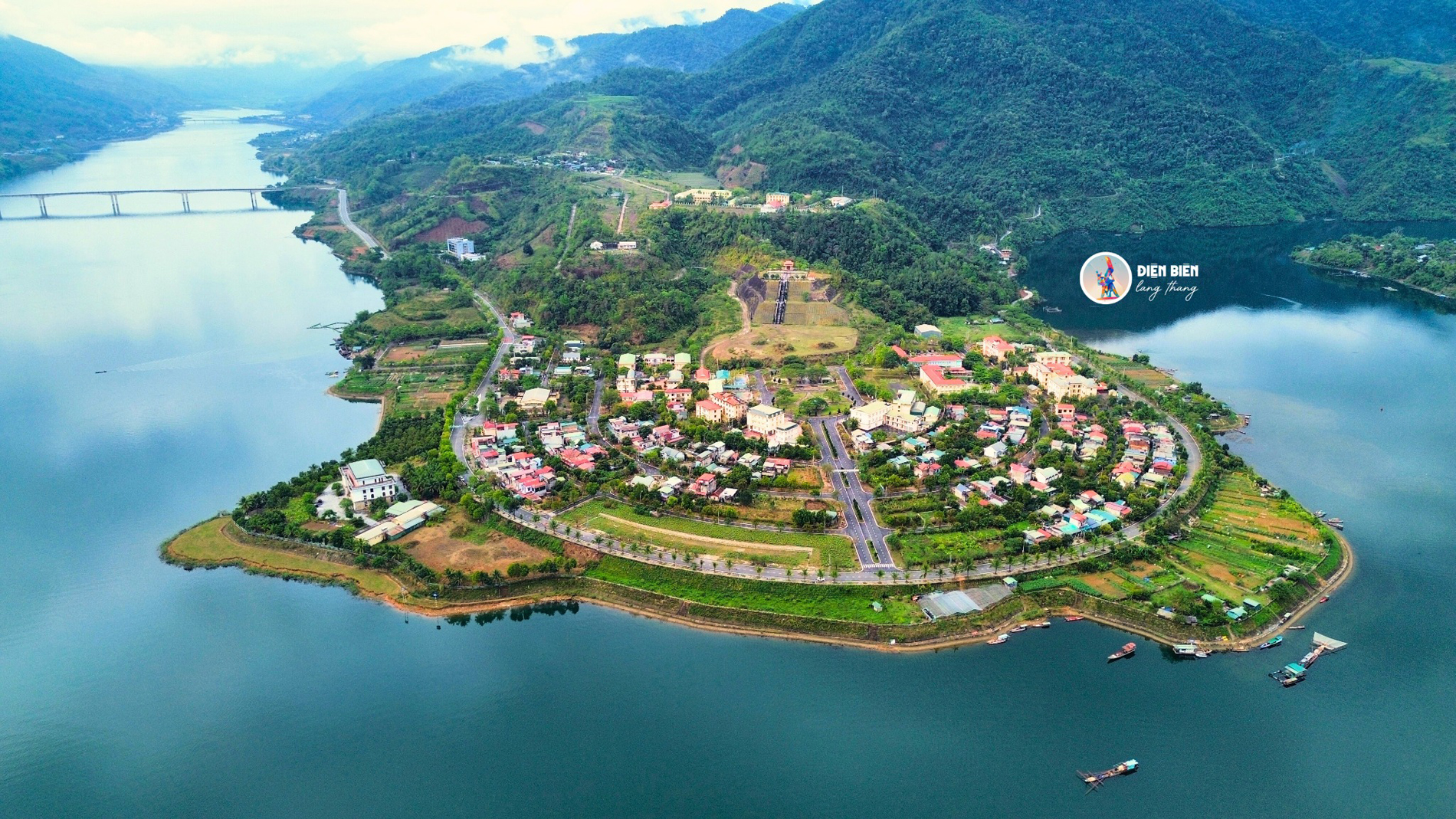
Muong Lay is considered a poetic riverine area in Northwest Vietnam. Photo: Dien Bien Lang thang
According to VietnamNet’s investigation, with a natural area of just over 11,266 hectares, accounting for about 1% of Dien Bien province’s area, Muong Lay has long held the position of the smallest town in the country, comprising three administrative units: Lay Nua commune, Na Lay ward, and Song Da ward.
The entire town is nestled in a narrow valley along the Nam Lay River up to the confluence of the Da River, Nam Na River, and Nam Lay stream.
Moreover, last month, this locality was recognized by the Vietnam Records Organization as the “Town with the highest density of traditional stilt houses of the Thai people – White Thai branch in Vietnam.”
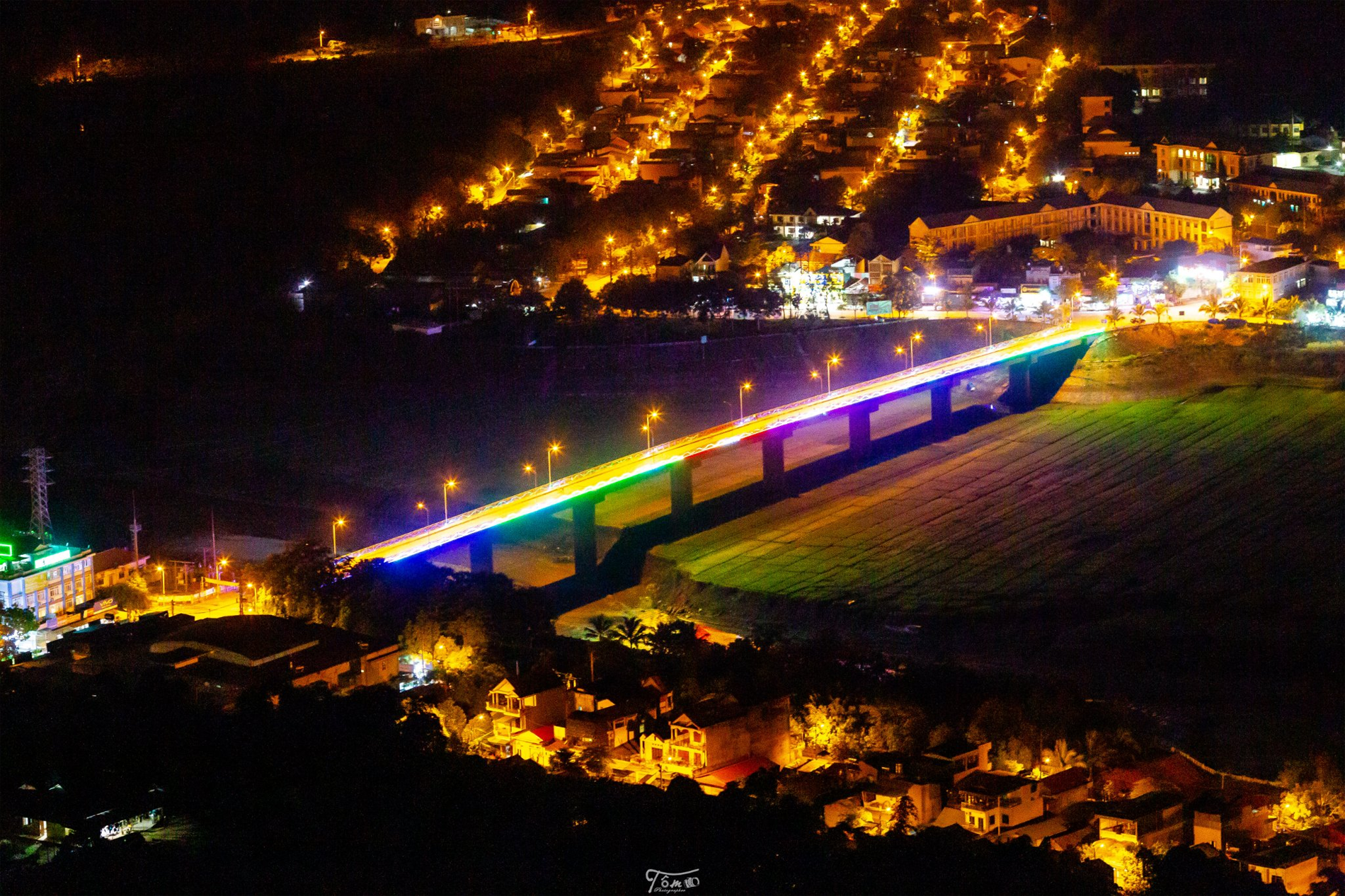
Muong Lay town at night. The photo features the Nam Can Mechanical Bridge. Photo: Tom Koi
Should you find yourself in Muong Lay town, in addition to the picturesque route along the lake, you can also immerse yourself in the local culture and explore the unique lifestyle of the indigenous people.
Notably, visitors can admire the houses with roofs made of natural stone, a distinctive feature exclusive to Muong Lay. These stone tiles are sourced from the Da River and crafted in Song Da ward, creating a unique aesthetic.
Additionally, a visit to the Nam Can Mechanical Bridge or the Muong Lay Mechanical Port, where major cultural, tourism, and sports events of the locality are often held, is well worth the trip.
Video: Nguyen Manh Quy
The Luxurious Estates of Emperor Bao Dai: A Glimpse into the Opulent Abodes of Vietnam’s Last Emperor, Including a Residence Once Beloved by Empress Nam Phuong, Just a Stone’s Throw Away from Ho Chi Minh City
“Hidden from many, the lavish estates of Emperor Bao Dai still stand today, boasting opulent architecture and prime locations. One such estate, located near Ho Chi Minh City, was once the favored retreat of Empress Nam Phuong. These grand residences offer a glimpse into the opulent past and showcase the exquisite tastes of Vietnam’s last emperor and his beloved wife.”




















